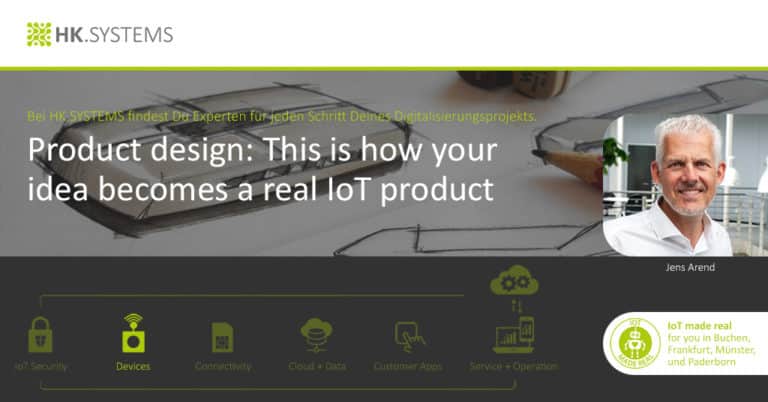Our understanding of good product design and effective construction in an IoT project is our commitment to quality, functionality and state-of-the-art technology. A perfect basis for efficiency and cost savings in development and production. And thus also a further guarantee for tangible competitive advantages. In the HK.SYSTEMS network, Hoffmann + Krippner GmbH, based in Buchen (Odenwald), takes on this demanding task. It is the specialist for the development and production of individual HMIs and printed electronics. In interdisciplinary teams, we design and construct IoT devices according to your requirements.
With our full-service package, we cover all areas of product development – from design and engineering, through development and production, to supplier selection and support. In short, we deliver an intelligently structured design process that creates optimal functionality and thus adds value.
Effective product design
customer benefits at a glance
- Efficient development and design processes
- Cost-saving production processes
- Independent appearance of the products within the scope of the IoT project
- Parts production in line with corporate design
- Project-oriented | Functional | Ergonomic | Sustainable | Aesthetic

The right technologies + the right resources
Our Design + Construction team at HK.SYSTEMS harmonizes the technical and ergonomic requirements, the material properties and the demands of the necessary certifications with an appealing form that matches the project requirements. To achieve this, we think about the design of the parts, the assembly and the selection of the appropriate manufacturing technologies.
We know: With the right tooling and housing concepts, fast and cost-effective production is possible. At the same time, we can significantly accelerate the development process using innovative processes such as additive manufacturing technologies. And we subsequently have sufficient resources to produce plastic and metal parts on an industrial scale for the respective IoT project.
The workflow – from idea to product
- The first step in a joint workshop is to clarify the detailed requirements. Then, together with the customer, we develop initial technical solutions and define the next steps.
- Next, we dive into the detailed development of the technical solution concepts: from the design detailing of a selected design draft to the integration of existing parts and components to the refinement of selected technical solution approaches.
- Next Step: the Proof of Concept (PoC) and the functional samples with the selected additive and other manufacturing processes to test the technical functions.
- This is followed by the technical concept and design development including the integration of all existing or newly defined parts and components. We develop technology proposals for production and different design variants.
- The next step is the production-ready article design for all components of the assemblies, housings and complete devices. Subsequently, we realize the prototype construction.
- Our comprehensive know-how in reverse engineering and injection molding simulation forms the bridge to final production and industrialization: All parts, assemblies, housings and complete devices developed by us now go into series production. Of course, we also take care of the procurement and production of the necessary series tools, final assembly and the development and production.
Special know-how: Additive manufacturing
High-quality plastic parts from the 3D printer as an alternative to the proven injection molding process: Whether medium or small series or prototypes – we master the innovative additive manufacturing technologies in the 3D printing process and produce high-quality parts from plastic: This technology not only saves weight and costs in the long term. You can also react more quickly to changing requirements, order according to the situation and do not have costly warehousing. Here the advantages of this future-oriented technology are obvious:
- Short manufacturing time: a few days to prototype
- Sustainability: less material waste
- Individualization: fast adaptation of 3D data
- Project acceleration: Short-term + flexible production
- Lightweight structures: multiple possibilities
- Cost efficiency: lower tooling costs and inexpensive test prints
- Free scalability: complex geometries possible

